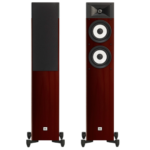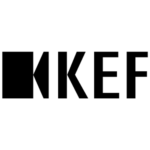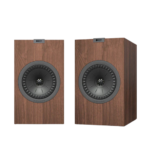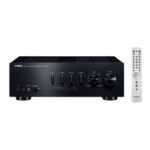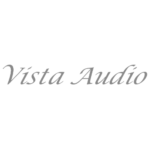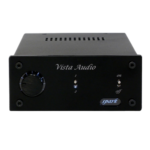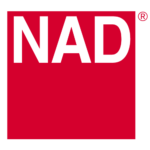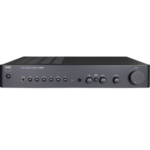Looking to buy some audiophile equipment on a budget? So, you want to enjoy high-quality sound and consider yourself an audiophile with a discerning ear. You have a sophisticated taste in music, but alas, your budget doesn’t allow you to buy audiophile equipment that costs like an average 3-bedroom house.
High-end speakers and expensive audiophile equipment can feel out of reach, leaving you wondering how to improve your audio experience without overspending.
The good news is that you don’t need to be a 0.1% percenter to enjoy great sound. With a bit of creativity and some DIY solutions, you can significantly boost your audio quality.
In this blog, we’ll explore practical and budget-friendly ways to transform your listening space into an environment that delivers great sound without emptying your wallet.
Below is a structured guide that outlines key components, recommendations, and tips for building an effective budget audiophile equipment system.
Best Budget Audiophile Equipment Guide for 2025: 3-Point Summary
Choosing Entry-Level Turntables: For an audiophile equipment system, consider quality entry-level turntables like the Fluance RT81, Sony PS-LX310BT, and Audio-Technica AT-LP60XBT. These models offer excellent sound quality, user-friendly features, and good value for money, making them ideal for beginners.
Importance of Quality Cables: While you don’t need to invest in the most expensive cables, using well-constructed interconnects and speaker cables can enhance sound quality. Look for cables with good shielding and conductivity to minimize interference and ensure optimal performance.
System Balance and Personal Preference: The choice of components and cables should complement each other to achieve the desired sound signature. Ultimately, personal preference plays a significant role in what sounds best to you, so consider auditioning different options when possible.
Best Budget Audiophile Equipment: The Basics
Key Components of an Audiophile Equipment System:
- Source: This could be a CD player, turntable, or digital music streamer.
- Amplification: An integrated amplifier or receiver that powers the speakers.
- Speakers: The most critical part of the system, responsible for sound reproduction.
- Cables and Accessories: Quality cables can affect sound quality, though they should be chosen wisely to avoid overspending.
Recommended Budget Audiophile Equipment
Speakers:
ELAC Uni-Fi UB52
- Rating: ★★★★☆ (4.5 out of 5 stars)
- Price: Approximately $700 per pair
- Size: 18.5 cm wide x 34.6 cm high x 27.5 cm deep (7.28” wide x 13.62” high x 10.83” deep)
- Number of Membranes: 3 drivers (1-inch soft dome tweeter, 4-inch aluminum midrange, and 5.25-inch aluminum woofer)
The ELAC Uni-Fi UB52 speakers are a standout choice for anyone seeking a balance of performance and value in a compact design. With their unique three-way architecture, these speakers utilize a concentric driver setu. The build quality is solid, featuring thick MDF construction that enhances durability and sound quality.
In my experience, the UB52s deliver a smooth and spacious soundstage. While they may not produce the deepest bass without a subwoofer, their overall tonal balance and imaging capabilities are commendable.
The only downside might be their somewhat uninspired aesthetic; however, the sound they produce more than compensates for this. A great piece of audiophile equipment.
JBL Stage A170
- Rating: ★★★★☆ (4.5 out of 5 stars)
- Price: Approximately $600 per pair
- Size: 19.1 cm wide x 94.0 cm high x 25.4 cm deep (7.5” wide x 37” high x 10” deep)
- Number of Membranes: 3 drivers (1-inch aluminum dome tweeter, two 5.25-inch polycellulose woofers)
The JBL Stage A170 speakers are an impressive option for those seeking quality sound. With their “2.5-way” design, they feature two woofers that work together to deliver tight bass and a clear midrange, while the aluminum dome tweeter provides crisp high frequencies.
In my opinion, these speakers excel in creating a dynamic and detailed soundstage, making them suitable for a variety of music genres. They handle bass exceptionally well, offering both quantity and quality that can fill a room without distortion.
The build quality is solid, with a sleek design that fits well in any setting. While they may not be the most visually striking speakers, their performance more than compensates for this.
KEF Q350
- Rating: ★★★★☆ (4.5 out of 5 stars)
- Price: Approximately $600 per pair
- Size: 21 cm wide x 35.8 cm high x 30.6 cm deep (8.3” wide x 14.1” high x 12.0” deep)
- Number of Membranes: 2 drivers (1-inch vented aluminum dome tweeter, 6.5-inch aluminum Uni-Q mid/bass driver)
The KEF Q350 speakers are a remarkable choice for audiophiles seeking high-quality sound at a reasonable price. Featuring KEF’s innovative Uni-Q driver technology, these speakers deliver exceptional clarity and detail across the frequency spectrum, making them suitable for various music genres and home theater applications.
In my unhumble opinion, the Q350 excels in creating a well-defined soundstage, with rich bass and crisp highs that can fill a room effortlessly. The build quality is solid, with an elegant design that fits seamlessly into any decor.
While they may not be the most dynamic speakers at lower volumes, their performance shines when pushed harder, maintaining composure without distortion.
Amplifiers:
Yamaha A-S801
- Rating: ★★★★☆ (4.5 out of 5 stars)
- Price: Approximately $900
- Size: 43.5 cm wide x 13.5 cm high x 36.2 cm deep (17.1” wide x 5.3” high x 14.3” deep)
- Number of Channels: 2 channels (stereo)
The Yamaha A-S801 integrated amplifier is a powerful and versatile option for audiophiles looking to enhance their audio experience within a reasonable budget.
With its robust Class AB design, it delivers a clean and dynamic sound, rated at 100 watts per channel, making it capable of driving a wide range of speakers effectively. The inclusion of a high-quality ESS Sabre DAC allows for exceptional digital audio performance, supporting high-resolution formats up to 384 kHz/32-bit PCM and DSD playback.
In my opinion, the A-S801 strikes a great balance between power and clarity, producing rich bass and detailed highs that make music enjoyable across various genres.
Its solid build quality and user-friendly interface add to its appeal, while the variety of inputs ensure compatibility with both modern and legacy audio sources.
Vista Spark Integrated Amplifier
- Rating: ★★★☆☆ (3.5 out of 5 stars)
- Price: Approximately $399
- Size: 13.5 cm wide x 6.6 cm high x 27.9 cm deep (5.3” wide x 2.6” high x 11” deep)
- Number of Channels: 2 channels (stereo)
The Vista Spark Integrated Amplifier offers a compact and straightforward solution for those looking for a good item for their audiophile equipment collection without it taking up much space. Designed and constructed in Serbia, this amplifier is notable for its solid build quality and minimalist aesthetic.
With a Class A/B amplification design, it delivers a warm and musical sound, making it suitable for both casual listening and more critical audio applications. In my opinion, the Spark excels in delivering clear midrange and smooth highs, although it may struggle with powering larger speakers due to its limited output of around 20 watts per channel.
The dual input options and simple controls make it user-friendly, perfect for desktop or bedroom setups. While it may not compete with higher-end amplifiers in terms of power or features, the Vista Spark provides good value for those seeking an affordable and compact integrated amplifier that still offers a pleasing listening experience.
- Rating: ★★★★☆ (4.5 out of 5 stars)
- Price: Approximately $399
- Size: 43 cm wide x 11 cm high x 28.5 cm deep (17” wide x 4.3” high x 11.25” deep)
- Number of Channels: 2 channels (stereo)
The NAD C316BEE V2 integrated amplifier is a well-regarded option for those seeking quality sound in a compact design. With a power output of 40 watts per channel into 8 ohms, it delivers a clean and balanced sound.
The inclusion of a high-quality phono stage is particularly appealing for vinyl enthusiasts, allowing for excellent playback without needing additional equipment.
In my expert opinion, the C316BEE V2 excels in providing a warm and engaging listening experience, with a clear midrange and solid bass response that belies its modest power rating. Its straightforward design, featuring essential inputs and a user-friendly remote control, makes it easy to integrate into any setup.
Additional Components:
- Digital-to-Analog Converter (DAC): For those using digital sources, a good DAC can enhance sound quality. Options like the FX Audio DAC X6 are affordable and effective.
- Subwoofer (Optional): For deeper bass response, consider adding a budget-friendly subwoofer.
Building Your System
Budgeting Tips When Picking Audiophile Equipment:
- Aim for a total budget of around $1,500 for a complete system, which includes speakers, an amplifier, and necessary cables.
- Consider purchasing used or refurbished equipment to save money without sacrificing quality.
- Prioritize spending on speakers and amplification as they significantly impact sound quality.
How Can I Build a Complete Audiophile System For Under $1,500
Building a complete audiophile equipment system for under $1,500 is entirely feasible with careful selection of components that deliver excellent sound quality without exceeding your budget. Here’s a guide to help you assemble a well-rounded setup.
Key Components
- Speakers
- JBL Stage A170: Priced around $600 per pair, these speakers offer ample bass and quality sound, reminiscent of classic JBL models.
- KEF Q150: Another great option for bookshelf speakers, known for their impressive soundstage and clarity, typically priced around $600 per pair1.
- Amplifier
- Yamaha A-S301: This integrated amplifier costs about $350 and provides 60 watts per channel, making it suitable for driving smaller bookshelf speakers effectively.
- Vista Spark Integrated Amplifier: At approximately $389, this no-frills amplifier focuses on sound quality and is ideal for budget setups.
- Source Components
- Fluance RT80 Turntable: Available for about $200, this turntable is a solid choice for vinyl enthusiasts looking for quality at a budget price.
- Bluesound Node Streamer: A versatile streaming option priced around $549, allowing access to various digital music services.
- Digital-to-Analog Converter (DAC)
- Schiit Modi 3e: Priced at about $129, this DAC enhances digital audio quality and is a worthwhile investment for any digital source.
Example System Configuration
Here’s a suggested configuration of audiophile equipment that fits within the $1,500 budget:
| Component | Model | Price |
|---|---|---|
| Speakers | JBL Stage A170 | $600 |
| Amplifier | Yamaha A-S301 | $350 |
| Turntable | Fluance RT80 | $200 |
| DAC | Schiit Modi 3e | $129 |
| Streaming Device | Bluesound Node | $549 |
| Total | $1,928 |
Adjustments to Fit Budget
To stay within the budget:
- Consider opting for more affordable speakers or an amplifier.
- If streaming is not essential, you can eliminate the Bluesound Node and use a less expensive option.
Additional Tips To Buying Audiophile Equipment on a Budget
- Prioritize Components: Focus on speakers and amplification first as they significantly impact sound quality.
- Used Equipment: Look for refurbished or second-hand gear to stretch your budget further.
- DIY Options: Consider building your own speaker kits or using DIY soundproofing materials to save costs.
- Research and Reviews: Always check expert reviews and user feedback to ensure you’re getting the best value for your money.
By carefully selecting each component based on your preferences and budget constraints, you can create a satisfying audiophile experience without overspending.
What Are the Best Entry-Level Turntables For an Audiophile System?
When building an audiophile equipment system on a budget, selecting the right entry-level turntable is crucial for achieving quality sound. Here are some of the best options available that provide excellent performance without breaking the bank:
Best Entry-Level Turntables
- Fluance RT81
- Price: Approximately $272
- Features: This manual turntable includes a built-in phono preamp, an Audio-Technica AT95E cartridge, and a solid plinth for reduced vibration. It offers great bass performance and overall sound quality, making it ideal for beginners who still want high fidelity.
- Sony PS-LX310BT
- Price: Around $250
- Features: A fully automatic belt-driven turntable with Bluetooth connectivity, making it easy to connect to wireless speakers. It has a built-in phono stage and offers excellent sound quality for its price, making it very user-friendly.
- Audio-Technica AT-LP60XBT
- Price: Approximately $199
- Features: This fully automatic turntable features Bluetooth connectivity and comes with a built-in phono preamp. It’s designed for ease of use and delivers solid sound quality, making it a great choice for those new to vinyl.
- Pro-Ject Primary E
- Price: About $199
- Features: Known for its purist design, this turntable focuses on sound quality without unnecessary features. It provides a balanced tonal delivery and is highly regarded for its performance at this price point.
- Lenco L-85
- Price: Approximately $249
- Features: A semi-automatic turntable that includes a built-in phono stage and USB recording capabilities. It’s straightforward to set up and offers good sound quality, making it ideal for beginners.
Each of these turntables brings unique features and strengths suitable for entry-level audiophiles:
- Fluance RT81: Best overall for sound quality and build.
- Sony PS-LX310BT: Best for Bluetooth connectivity and ease of use.
- Audio-Technica AT-LP60XBT: Great budget option with automatic operation.
- Pro-Ject Primary E: Excellent sound fidelity with a no-frills approach.
- Lenco L-85: Versatile option with USB recording capabilities.
Choosing any of these models will provide a solid foundation for your audiophile system while keeping costs manageable.
Do I Need to Buy Special Cables
When building an audiophile equipment system, the question of whether you need to buy special cables often arises. Here’s a breakdown of the considerations regarding audio cables:
Types of Cables in an Audiophile Equipment System
- Interconnect Cables: These connect source components of your audiophile equipment (like a turntable or CD player) to your amplifier. Common types include:
- RCA Cables: The most typical for connecting consumer audio equipment.
- XLR Cables: Balanced cables that are more effective at rejecting electrical interference, suitable for professional setups.
- Speaker Cables: These connect your amplifier to the speakers. They come in various gauges and terminations (banana plugs, spade connectors), with thicker cables generally offering better performance.
- Power Cables: While often overlooked, high-quality power cables can reduce noise and improve sound quality by providing cleaner power to your components.
- Digital Cables: Used for connecting digital sources to DACs or amplifiers, including USB, coaxial, and optical cables.
Do You Need Special Cables?
- Quality Matters: While you don’t necessarily need to invest in the most expensive cables, using well-constructed cables with good shielding and low impedance can enhance sound quality. For example, oxygen-free copper (OFC) cables are often recommended for their conductivity and durability.
- Avoiding Cheap Options: Standard cables that come with devices may not provide the best performance. Upgrading to better-quality interconnects and speaker cables can yield noticeable improvements in sound clarity and dynamics.
- Balance Your System: The choice of cable should complement the overall character of your audio system. For example, if your system has a warm sound signature, pairing it with a very transparent cable might not yield the best results.
- Personal Preference: Ultimately, the effectiveness of cables can be subjective. Some audiophiles believe that higher-end cables make a significant difference, while others argue that basic quality is sufficient for most setups.
In summary, while you don’t need to buy the most expensive special cables for your audiophile system, investing in quality interconnects, speaker cables, and power cords can help optimize performance. It’s advisable to choose cables that fit your specific components and listening preferences while avoiding overly cheap options that could degrade sound quality.
DIY Options to Enhance Your Audiophile Equipment Setup Without Spending More Money
Improving your audiophile equipment setup can be achieved effectively and economically through various DIY methods. Here are some creative ideas using household items and simple materials:
1. DIY Acoustic Panels
- Materials Needed: Wooden frames (1×4 lumber), absorptive material (rock wool or fiberglass insulation), breathable fabric, spray adhesive, and a staple gun.
- Steps:
- Construct a rectangular frame using the wooden boards.
- Cut the absorptive material to fit inside the frame and secure it with spray adhesive.
- Wrap the frame with fabric, ensuring it’s taut, and staple it to the back.
- Hang these panels on walls, especially at first reflection points to reduce echoes and improve sound clarity.
2. Using Soft Furnishings
- Blankets and Comforters: Hang heavy blankets on walls or drape them over furniture to absorb sound. This can significantly reduce echoes and improve overall acoustics in your space.
- Rugs and Carpets: Place rugs on hard floors to minimize sound reflections from surfaces. Thick rugs are particularly effective at absorbing low frequencies.
3. Bass Traps
- DIY Method: Create bass traps using thicker absorptive materials (at least 4 inches) placed in the corners of your room where low frequencies tend to accumulate. You can wrap rigid fiberglass panels in breathable fabric for a more polished look.
- Alternative Materials: Consider using old mattresses or foam as makeshift bass traps by positioning them in corners to help manage low frequencies.
4. Bookshelves as Diffusers
- A full bookshelf can act as a natural diffuser, scattering sound waves due to its irregular surfaces. This helps create a more balanced listening environment without additional cost.
5. Everyday Items for Sound Absorption
- Egg Crate Foam: While not as effective as professional acoustic foam, egg crate foam can be used for high-frequency absorption when placed on walls or ceilings.
- Towels and Pillows: Strategically place towels or pillows around your space to absorb sound. These items can help dampen harsh echoes and improve overall acoustics.
6. Strategic Placement of Items
- Optimize your speaker placement to minimize reflections by positioning them away from walls and corners. Use furniture like sofas and chairs to break up sound waves and reduce echo in the room.
7. DIY Diffusers
- Use wood scraps arranged in varying depths to create diffusers that scatter sound reflections, adding sonic variety without the cost of commercial products.
By utilizing these DIY options, you can significantly enhance your audiophile equipment setup’s acoustics without spending much money. Whether through creating acoustic panels, using soft furnishings, or repurposing everyday items, these strategies will help you achieve a more professional-sounding environment for recording or listening.
Wrapping It Up
Reflecting on my journey into the world of audiophile equipment, I’ve learned that achieving great sound doesn’t have to come with a hefty price tag. My experiences with various amplifiers, like the NAD C316BEE V2 and others, have shown me that even budget-friendly options can deliver impressive performance.
I’ve found that taking the time to research and understand the specifications helps in making informed decisions. Listening to different setups in showrooms or at friends’ homes has also been invaluable; it’s one thing to read about sound quality, but experiencing it firsthand is irreplaceable.
For anyone looking to enhance their audio experience, my advice is to prioritize what matters most to you—whether it’s power, clarity, or versatility. Don’t be afraid to invest time in exploring different brands and models, as well as considering used or refurbished options for better deals.
Finally, remember that your listening environment plays a significant role in sound quality, so take some time to optimize your space. With patience and a bit of experimentation, you can create a satisfying audiophile equipment setup that brings your favorite music to life without breaking the bank.
FAQ
An audiophile system is a high-quality audio setup designed to reproduce sound as accurately and faithfully as possible. It typically includes components of audiophile equipment, such as a turntable, amplifier, speakers, and cables that work together to deliver an exceptional listening experience.
Yes, it is entirely possible to build a budget audiophile system for under $1,500. By selecting quality entry-level components of audiophile equipment and being strategic about your purchases, you can achieve excellent sound quality without spending a fortune.
Some great entry-level turntables include:
- Fluance RT81: Known for its solid build and good sound quality.
- Sony PS-LX310BT: Features Bluetooth connectivity and ease of use.
- Audio-Technica AT-LP60XBT: A fully automatic turntable with built-in phono preamp.
- Pro-Ject Primary E: Offers great sound fidelity with a straightforward design.
While you don’t need the most expensive cables on your audiophile equipment list, investing in quality interconnects and speaker cables can enhance sound quality. Look for well-constructed cables that provide good shielding and conductivity to minimize interference.
Start by determining your overall budget and then prioritize parts of your audiophile equipment based on their impact on sound quality. Typically, allocate more funds to speakers and amplification, as they significantly influence the listening experience.
Yes, purchasing used or refurbished audio equipment can be a cost-effective way to acquire high-quality components at lower prices. Just ensure that you buy from reputable sources and check the condition of the items.
When selecting speakers, consider factors such as:
- Your listening space size.
- The type of music you enjoy.
- The power requirements of your amplifier.
- Reviews and ratings from other audiophiles.
To find the best deals on audiophile equipment, shop around at various retailers, look for discounts or coupons, and consider online marketplaces for used or refurbished gear. Researching products that have received awards from reputable publications can also guide you towards quality options.
Yes, if you’re using digital sources, investing in a good DAC can significantly improve sound quality by converting digital audio signals into analog formats more effectively than built-in converters in many devices. DAC could be a very valuable addition to your audiophile equipment.
The primary goal is to create an audiophile equipment system that delivers high-quality sound tailored to your personal preferences and musical tastes while staying within your budget constraints.




